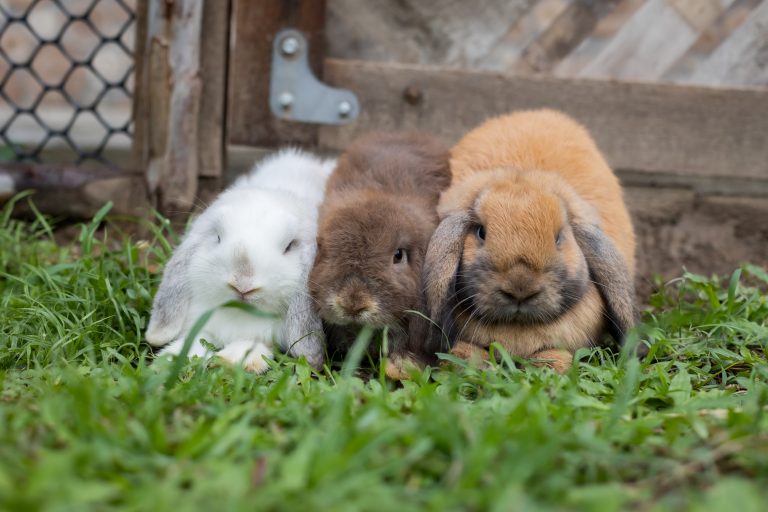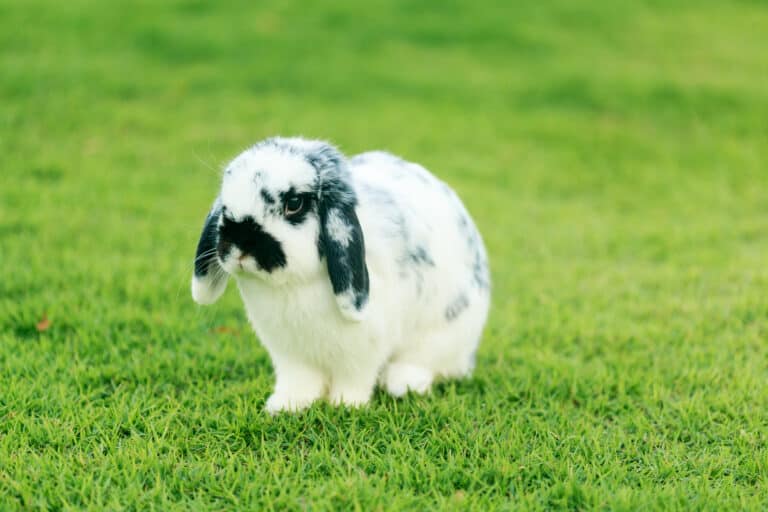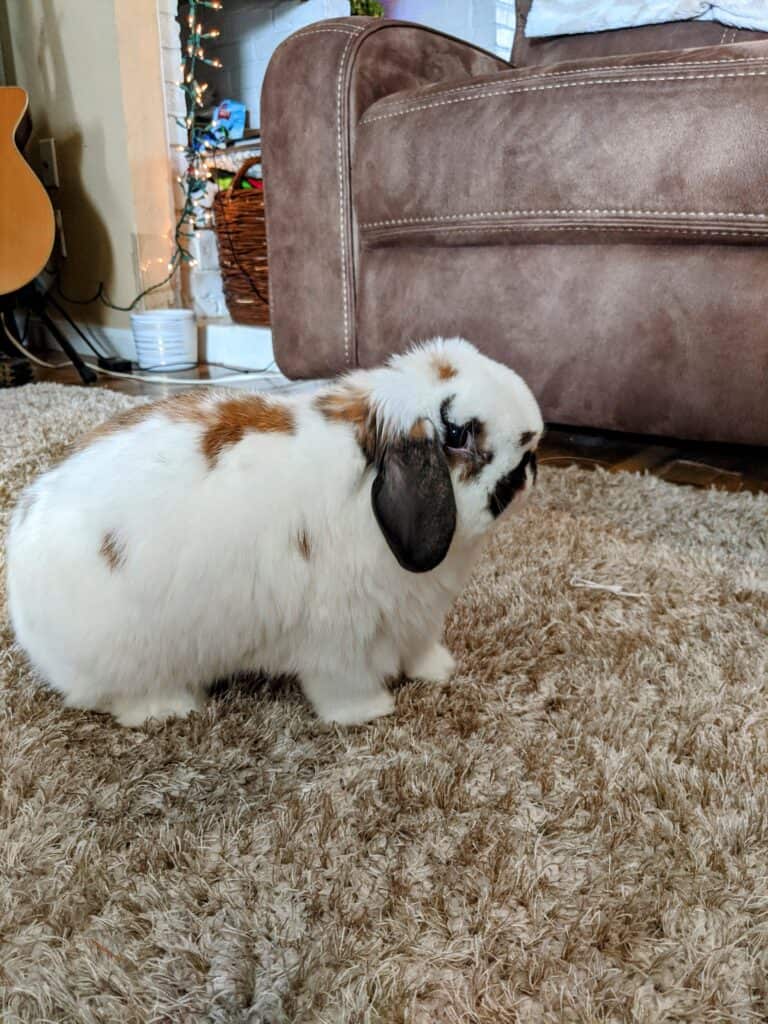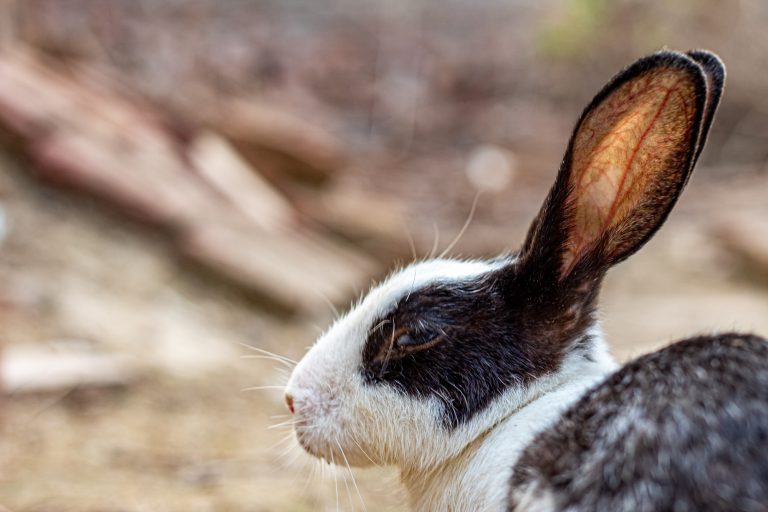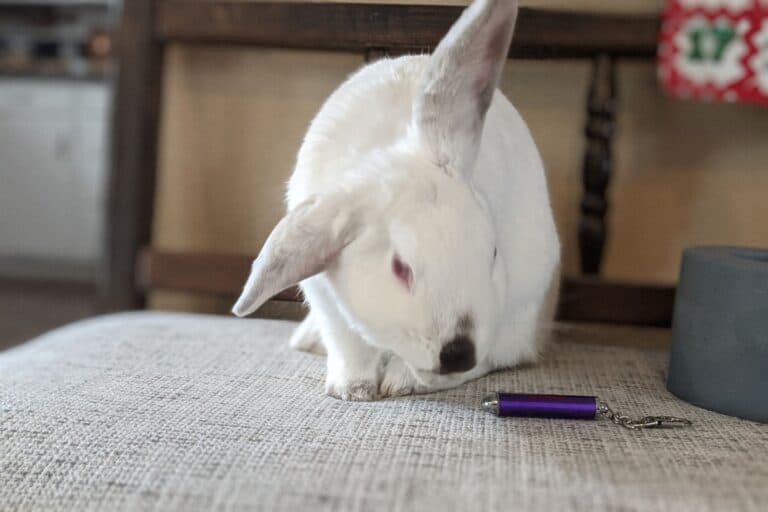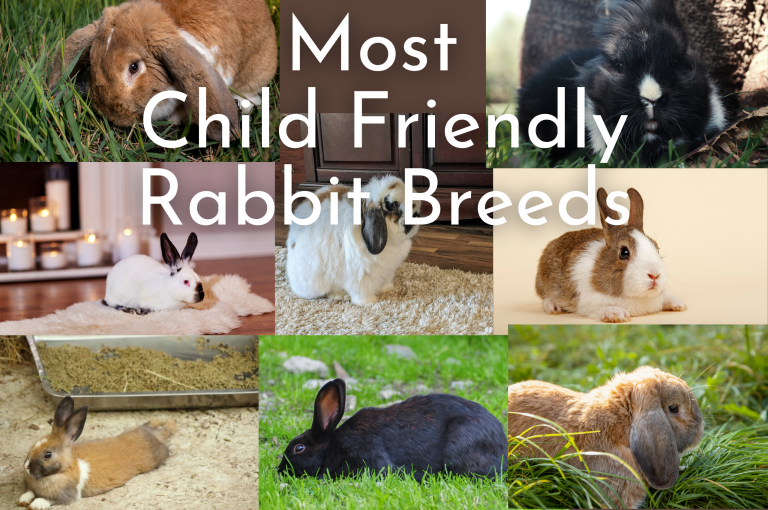Largest Rabbit Breeds: 7 Types That are Over 9 Pounds

Do you think of rabbits as itty-bitty balls of fluff that weigh close to nothing? If you do, you’ll surely be surprised to know that some buns can grow as big as a medium-sized dog. Yes, a dog! And these largest rabbit breeds are just as affectionate as their smaller counterparts.
Let’s take a look at seven different types of giant rabbits and see if one will make a great addition to your pet-loving home.
Types of Large Rabbit Breeds
We’re looking at seven breeds of rabbits that are considered giant or large. These big rabbits are typically over 7 pounds with some tipping the scales at 25 pounds! Care for a larger breed of rabbit is slightly different than that of a smaller breed like a mini or holland lop. From the food intake to the enclosure, if you’re considering a larger breed rabbit, you’ll want to make sure you have the space to care for them.
Read on to discover more about seven breeds of large rabbits:
1. Flemish Giant

They’re not called the “king of rabbits” for nothing. The heavyweight among the large breed, the Flemish Giant, typically tips the scale at 14 pounds, and some may even reach an impressive 22 pounds. But don’t be intimidated by their size because they’re also known as the gentle giants of the rabbit world.
Their sweet, docile nature makes them great pets and if you socialize them at a young age, they’ll do well even with small kids. Thanks to their size, you won’t have to worry as much as with smaller, more fragile breeds when it comes to the handling they can get from your young ones. However, you’ll still need to supervise any interactions between this bun and small children, of course.
2. Giant Angora
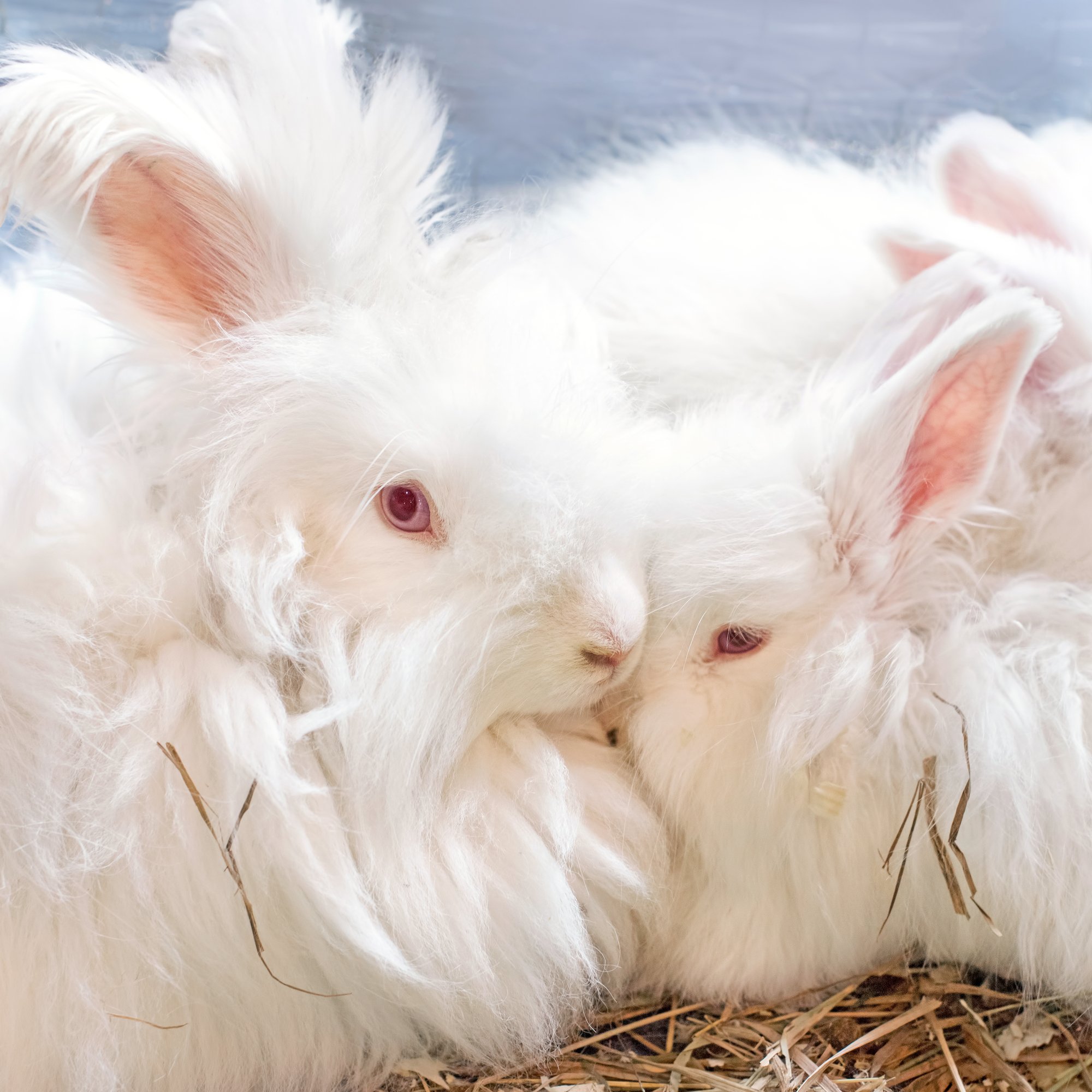
This giant rabbit breed is quite a beauty with its pink eyes and long white fur. The males usually reach a weight of around 9 pounds while the females are heftier at 10 pounds.
Calm and easy-going like the Flemish Giant, the Giant Angora enjoys tremendous popularity as a household pet. However, if you’re looking to take one home, be ready with a good comb as their long fur and wool undercoat need intense grooming.
You can house your Giant Angora indoors or outdoors. But those kept outside your home need protection from predators and extreme weather.
3. Giant Chinchilla
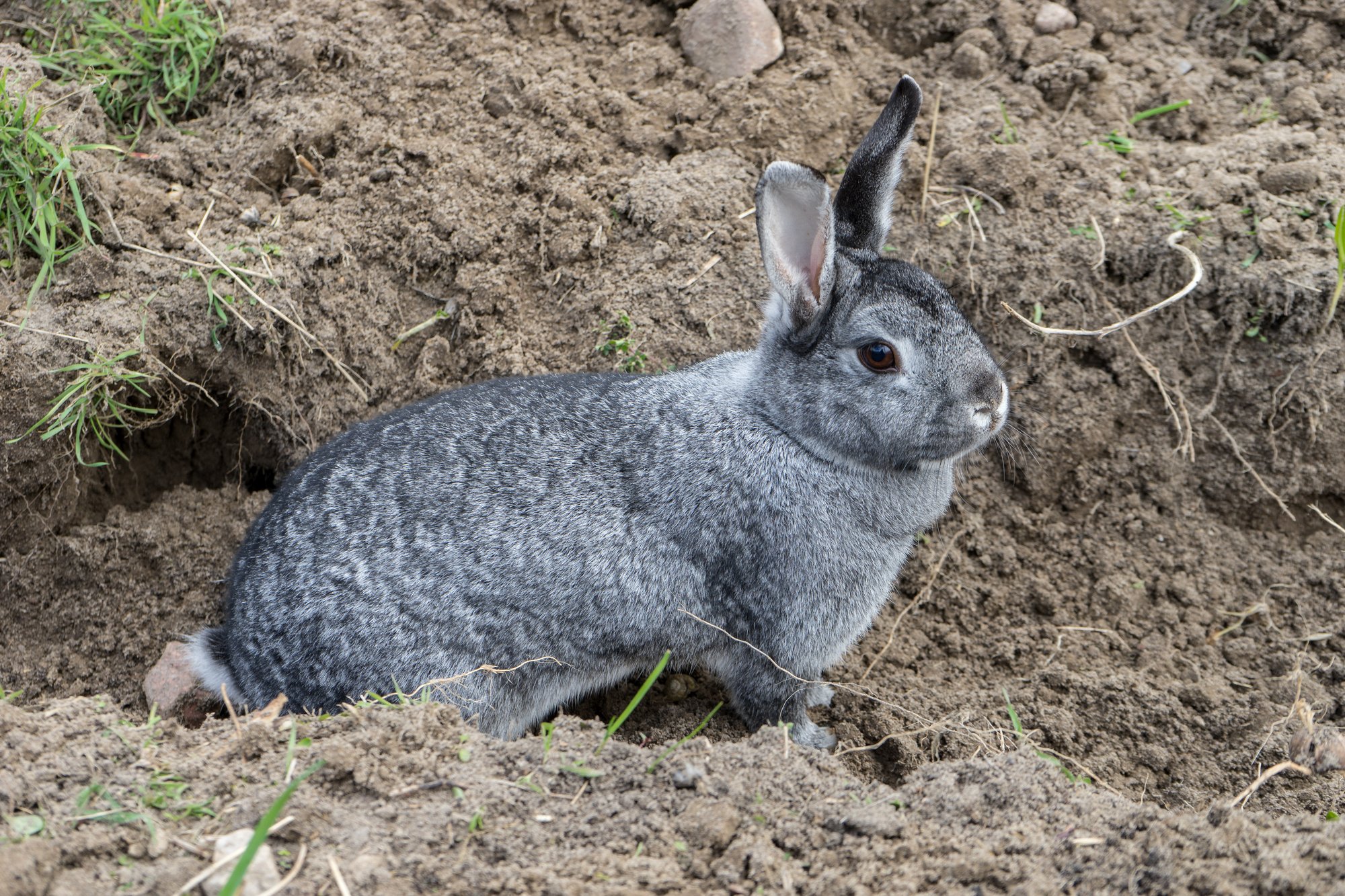
A cross between the regular Chinchilla and the Flemish Giant, this bun breed weighs in at 12-15 pounds for the buck and around 13-16 pounds for the doe.
With their sweet disposition and easy maintenance, the Giant Chinchilla are ideal house pets for seniors, homes with kids, and working singles. These giant buns love to lounge around the house and be with their human family, which makes them wonderful companions.
As a breed, Giant Chinchillas have no major health issues, but they can suffer in extreme heat, so make sure you keep them cool, especially during hot summer days.
4. Giant French Lop
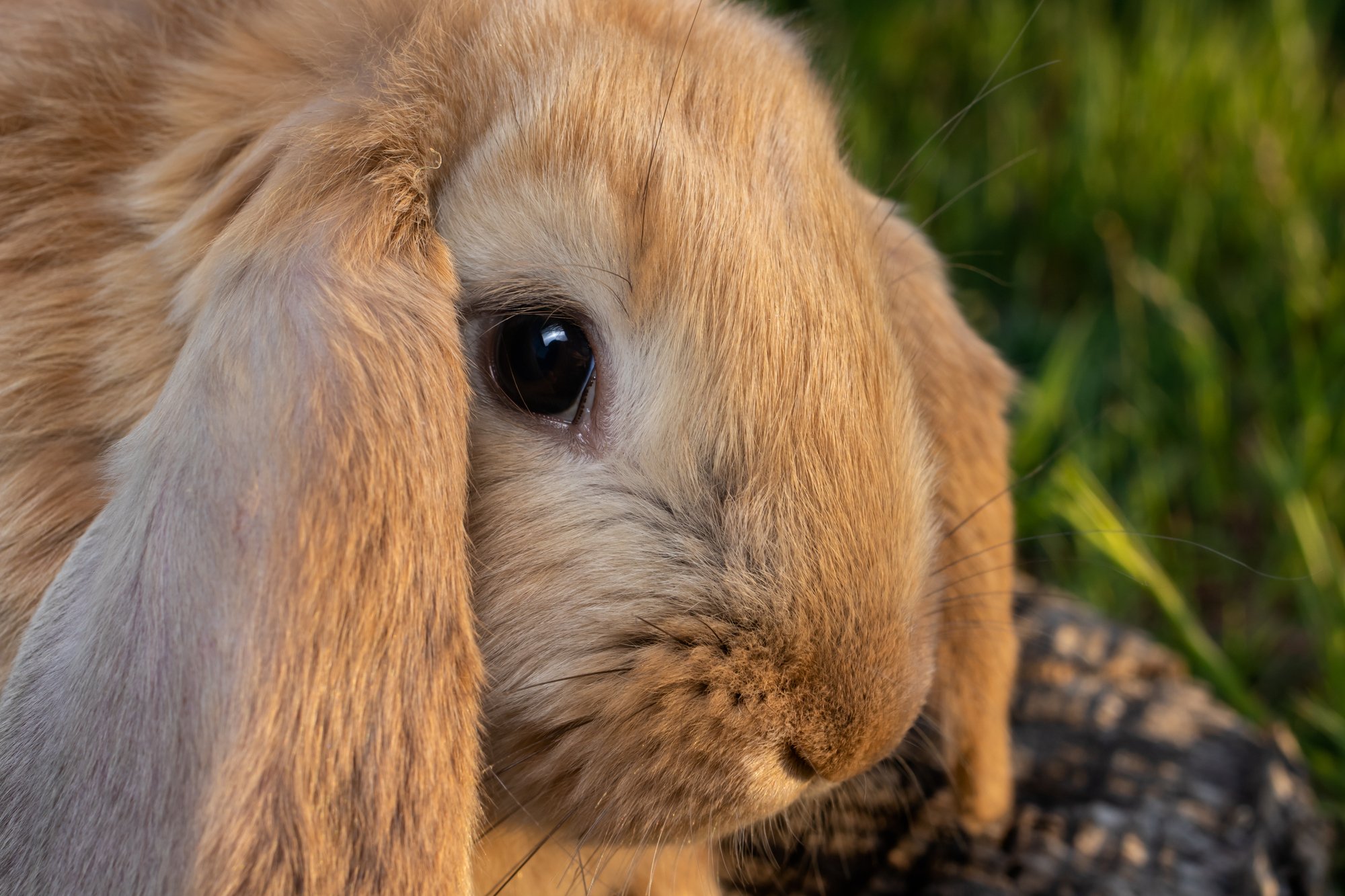
As the breed’s name implies, this bun originated from France and was created by crossing an English Lop and a butterfly rabbit.
Giant French Lops reach approximately 10 pounds during adulthood, and their soft, dense coat comes in various colors.
This is one intelligent bun. Some fur parents even claim they are the smartest among the rabbit breeds. With their docile nature, they do well with kids and even with other pets, such as cats and dogs.
They love company so keeping them in pairs is a good idea.
5. Continental Giant Rabbit

Like the Giant French Lop, the Continental Giant is another smart bun, making them easy to train. Add the friendliness of this large breed to their endearing traits, and you have a rabbit that many fur parents will love to have in their homes.
This bun comes in two varieties, the White Continental and the Colored Continental. Both types sport a soft, dense coat that requires regular grooming.
With a weight of around 16 pounds, this is one hefty rabbit, indeed. However, like most of its giant counterparts, the Continental Giant is good-natured and friendly, making them great companions for the whole family.
6. Checkered Giant

This breed probably got its name from their unique coat pattern; white with blue or black markings around the eyes and nose, plus a strip of dark fur running down the spine.
The bucks usually tip the scale at 11 pounds, the does at 12 pounds. But even with their heft, Checkered Giants love to move, so make sure you provide them with plenty of exercise and stimulating activities.
In contrast with other giant breeds with friendly natures (the Flemish Giant and Giant French Lop, for example), Checkered Giants have a nervous temperament and tend to bite when provoked.
7. British Giant
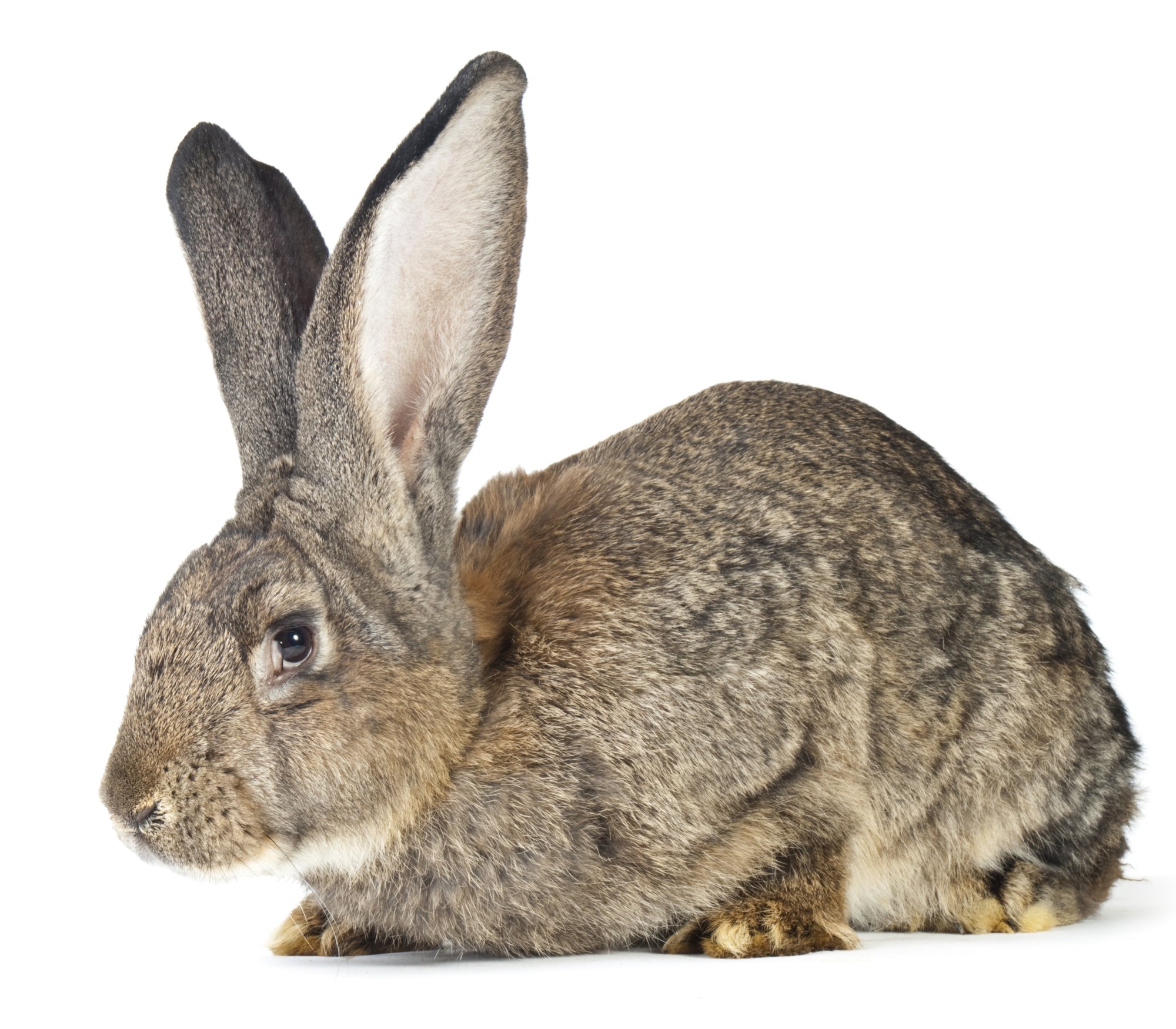
Rabbits belonging to this breed are seldom seen outside the United Kingdom, where they originated. Their weight in adulthood ranges between 12-15 pounds, and they live up to around 6 years.
British Giants are sweet-natured, friendly, and sociable creatures, making them ideal companions for kids and seniors alike.
Because of their size and strength, they can thrive outdoors just as long as you provide them with a safe habitat. With their dense, medium-length coat, they’ll need regular grooming to keep their fur soft and tangle-free, especially when they molt.
Caring for Big Rabbit Breeds
Buns coming from giant breeds are as cuddly and lovable as other rabbit sizes. However, they come with their own requirements and health considerations that may differ from their smaller counterparts. Be ready to make adjustments when it comes to the following:
Housing
Giant breeds need bigger hutches compared to smaller buns. Add the fact that rabbits do best in pairs, and you get an idea of the size of the accommodation extra-large buns require.
Aside from their cage, you’ll have to provide plenty of space for exercise, roughly around 20 feet or so, for them to graze, dig and run around.
Food
In terms of food, giant buns don’t require much more than smaller breeds. Still, those minor additions add up, so expect to shell out an increased amount to feed your hefty fur baby.
Life Expectancy
Like with dogs, giant breeds tend to have shorter life spans than their tinier kin. While dwarf rabbits live around 8-10 years, giant ones usually survive for only about 4-6 years.
Health Issues
Size sometimes matters when it comes to certain medical conditions. This is true with rabbits as well as with other species. Common health problems giant buns encounter are:
- Arthritis: They’re heavier, which puts more stress on their joints, and the impact adds up over the years. As a result, giant bun breeds tend to develop arthritis as they age.
- Heart diseases: Cardiomyopathy seems more common in larger rabbit breeds. Dilated cardiomyopathy, in particular, occurs more frequently in giant buns.
- Pododermatitis (sore hocks): Due to their weight, giant rabbits experience more pressure on their heels (hocks), which can lead to inflammation or infection.
Now that you know what to expect when caring for a giant rabbit, you can better decide if you’ll want one for a pet. But then, no matter what size of rabbit you bring home, you’ll be sure to enjoy the kind of affection and companionship these lovable fur babies give their doting humans.
More Types of Rabbits
- How Big Do Holland Lop Rabbits Get? Complete Guide
- How Long Do Flemish Rabbits Live: Giant Breed Facts
- Are Rabbits Rodents? Find Out More About These Small Mammals
- How Long Do Holland Lop Rabbits Live?
- All About Bunnies with Red Eyes: Why and How They Get Red Eyes
We hope you enjoyed this post! If you did, will you give it a share or two 🙂 Thank you! ~from Every Bunny Welcome


